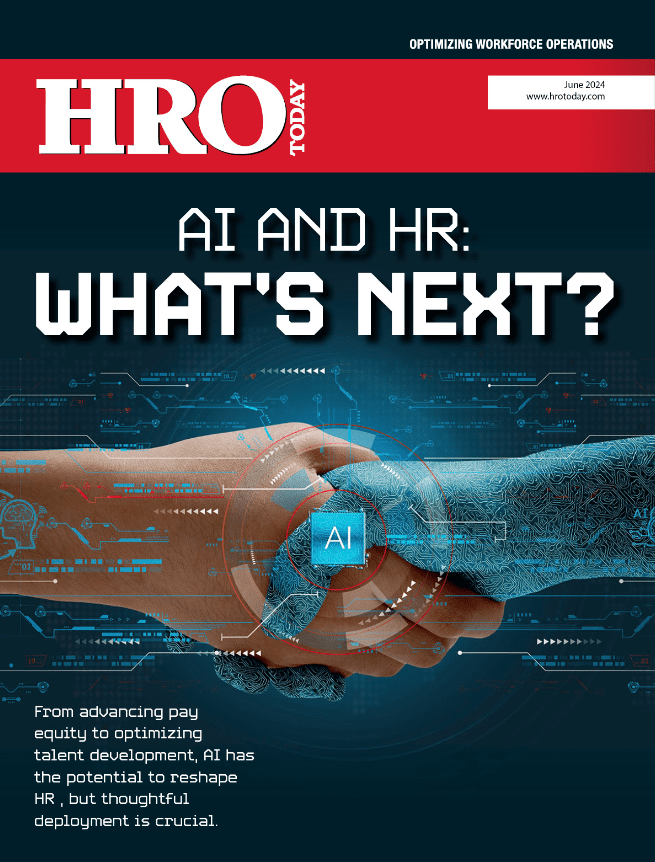Leveraging data enables HR teams to make better decisions around the changes in employee experience and expectations.
By Jen Straus
For many businesses around the world, the COVID-19 pandemic accentuated the vital role of HR. Employees’ expectations have changed -catapulting health and wellness, flexible work arrangements, and the need for transparent leadership to the forefront. As a result, HR has been pushed to redesign and reimagine its function within the workplace.
According to a survey by ADP Canada, 43% of HR professionals believe the role of HR has changed because of the pandemic, with the majority saying that HR is now playing a more strategic role at companies.
Many organizations are on the cusp of recovery but still face uncertainties around new COVID-19 variants, supply chain disruption, inflation, The Great Resignation, and the ongoing war for talent. To combat these challenges, strategic HR leaders have turned to leveraging technologies like surveys, benchmarking solutions, visualization dashboards, and more sophisticated predictive analytics tools to connect their organization’s people strategy to its business strategy.
In a survey conducted by Deloitte, 70% of executives surveyed expect analytics to become more critical to businesses in the next three years.
For HR teams striving to build a corporate culture in a hybrid environment, retain talent, and instill a sense of purpose among employees, the need for real-time people data has become essential.
43% of HR professionals believe the role of HR has changed because of the pandemic, with the majority saying that HR is now playing a more strategic role at companies.
The Increasing Importance of People Analytics
People analytics collects data and applies data-driven insights to improve hiring decisions, workforce processes, and the employee experience. Many HR organizations are building teams filled with data scientists to help navigate the increasing amount of people data. The growing adoption of these analytics helps businesses take the guesswork out of people management. It enables HR teams to make data-driven decisions and better understand what their organizations need to succeed.
Being able to react quickly to address employee issues has become a vital role of the HR function. In a recent survey conducted by Gartner, over half of U.S. employees say that the pandemic has changed their expectations of their employer. Along with expectations of greater empathy and a more flexible work environment, there’s increasing demand to improve diversity and inclusion within organizations. As businesses struggle to retain employees and fill job openings, HR teams must have access to reliable measures to gauge employee needs and sentiment -that’s where people analytics comes in.
One effective strategy is leveraging surveys and creating a continuous listening strategy. At Pie Insurance, we focus on key inflection points in the employee experience like benefits, learning, development, and working arrangements, and seek to gain insight into how well our efforts are paying off. We’ve designed these surveys with common questions so we can create a through line of data throughout the employee journey. These questions serve as a thread of continuity for knowing when things begin to change in an employee’s journey or their sentiment, and ultimately, where we need to focus our attention for the purpose of retention and employee engagement.
70% of executives surveyed expect analytics to become more critical to businesses in the next three years.
Effective Ways to Use Analytics
Business leaders have become increasingly aware that people are their most important asset. Because of this, they’re now looking to HR to gain a deeper understanding of the employee experience to engage and retain talent. Real-time insights into why people are engaged with what they do, how that translates into business strategy, and what companies can improve to attract, develop, motivate, and retain top talent can transform business. To maintain a seat at the decision-making table, HR teams must have insights into the cause of workplace issues and pain points, and how to create a positive employee experience.
The first step in effectively using analytics is to define the analytics strategy. It’s critical to have objectives that align with the business’s goals, otherwise there will be too much data to navigate. Second, ensure HR teams are trained and skilled in the technology in place. That’s not to say suddenly everyone in HR needs to become a data scientist. Still, HR teams must understand what tools are available and how to use them to generate relevant strategic workforce insights. They must be able to ask the right questions and communicate the findings and metrics to business leaders to drive change.
By effectively evaluating the metrics generated by people analytics, HR leaders can devise strategies to improve employee engagement and retention, streamline management processes, assess the effectiveness of employee development programs, and uncover any areas that require investment or system improvements.
For example, last year at Pie Insurance, the company began tracking hiring practices among women and people of color against industry-standard targets. Over the course of the year, we analyzed the data and determined where we met targets and where there was space for improvement in hiring diverse talent. By putting this data into the hands of the company’s hiring managers and people team, we were able to make significant improvements, ultimately closing out 2021 on target with hiring people of color and approaching our target for hiring women. Moving forward, leaders will be able to regularly review data and adjust training and hiring practices efficiently and effectively.
Becoming a data-driven HR organization isn’t easy or a transformation that can be made overnight. In fact, it’s better to integrate into an organization slowly and strategically, so it becomes a part of the entire organization’s culture. By gradually making decisions informed by data, the business, and its people will benefit in the long run. For HR teams, knowing how to act on unbiased data to guide complex people-related decisions will save a company time and money and ultimately drive business impact.
The Future of HR is Data-Driven
HR is no longer solely in the business of hiring and solving employee issues. The scope of the HR department has expanded and is now responsible for delivering data and insights into the people side of work. By investing in tools and training and encouraging the development of a data-informed culture, business leaders can shift away from decisions based on instincts and intuition to being data-informed, which ultimately unlocks the true power of an organization’s people.
Jen Straus is vice president of people operations for Pie Insurance.













